When it comes to BBQ, few things are as satisfying as a rack of ribs. While there are many different types of ribs, beef and pork ribs are two of the most popular choices. These meats have different flavors, cooking times, and even health benefits, making it tough to decide which one to choose.
Beef ribs are known for being meaty and rich in flavor, but they are also notoriously tough to cook. Pork ribs, on the other hand, are more tender and juicy with a sweeter flavor profile. But which one is better? This article will explore the differences between beef and pork ribs, including the taste, texture, and cooking methods. So, get ready to sink your teeth into this beef vs pork ribs showdown!
What are Pork Ribs?
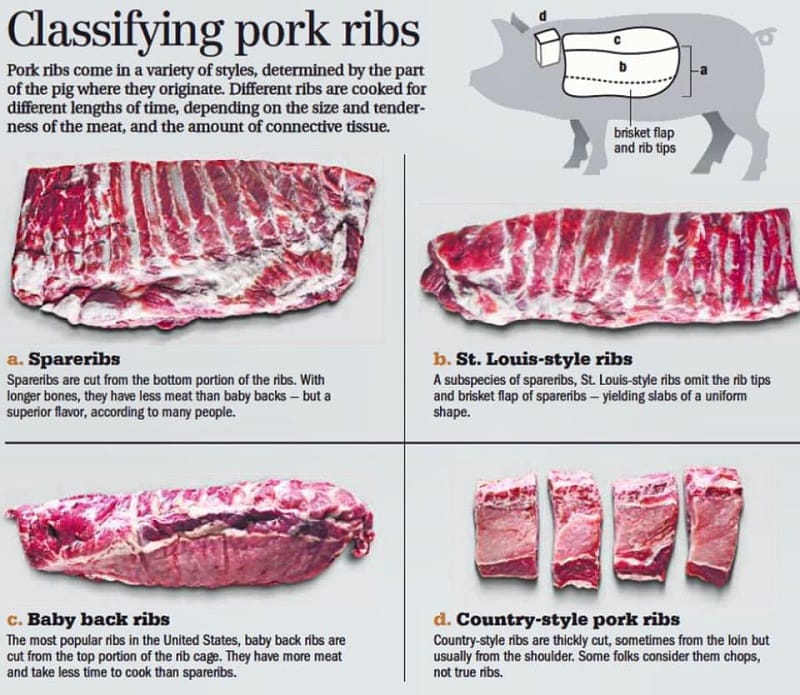
Pork ribs are cut from the rib section of the pig and usually come as either baby back ribs or spare ribs. Baby back ribs are smaller and more tender than spare ribs, while spare ribs are larger and hold more flavor.
You’ll be in for a delicious treat no matter which type of rib you choose. Pork ribs are incredibly flavorful, especially when cooked low and slow. You can’t go wrong with the classic barbecue method, but there are many other ways to cook pork ribs.
When preparing pork ribs, it’s important to trim away any excess fat and silver skin. These can add an unpleasant texture to the meat and will not cook down. Make sure to remove these before you begin cooking.
No matter how you prepare your pork ribs, you’ll be in for a delicious and flavorful meal.
Types of Pork Ribs
When it comes to pork ribs, there are four main types: baby back, spare ribs, St. Louis cut, and country-style ribs.
- Baby Back Ribs: Baby back ribs are the most popular type of pork rib. They are cut from the top of the rib cage near the backbone, sometimes called “back ribs.” Baby back ribs are shorter and more curved than spare ribs. They are meatier, leaner, and more tender than spare ribs, making them ideal for grilling.
- Spare Ribs: Spare ribs are cut from the lower portion of the rib cage. They are larger and flatter than baby back ribs. They are also fattier and more flavorful than baby back ribs, making them ideal for slow cooking and smoking.
- St. Louis Cut Ribs: St. Louis cut ribs are a type of spare rib. They are cut from the side of the rib cage and are rectangular and uniformly thick. St. Louis cut ribs are meatier, fattier, and more flavorful than baby back ribs and are ideal for long, slow cooking methods.
- Country-Style Ribs: Country-style ribs are not true ribs but are cut from the shoulder blade of the pig. They are short, thick, and rectangular. Country-style ribs are very flavorful but can be tough if not cooked properly.
What are Beef Ribs?
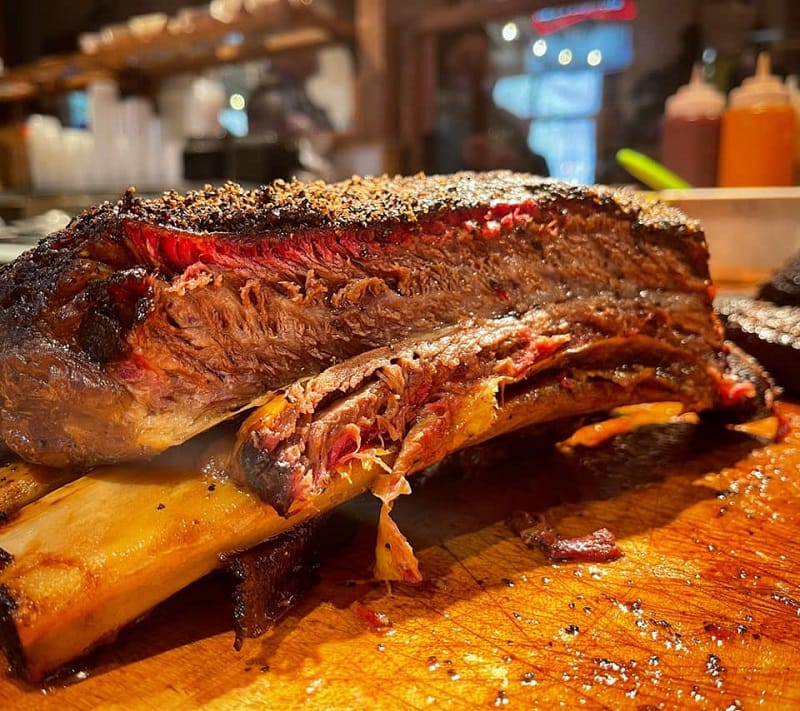
Beef ribs come from the rib section of the animal, which is found between the neck and the front legs. As the name implies, these ribs are made up of several ribs, which are connected along their length. The bones are covered in a layer of fat and connective tissue, which gives the ribs their characteristic flavor.
Beef ribs can be cooked in various ways, but braising, grilling, and smoking is the most popular methods. Braising is a slow and gentle cooking method where the ribs are cooked in liquid, such as broth or beer, over low heat for a long period of time. Grilling is a high-heat method that helps to caramelize the fat on the ribs and impart a smoky flavor. Smoking is a low and slow method that allows the ribs to absorb the smoke flavor and tenderize the meat.
Beef ribs are often served with sauces and side dishes such as mashed potatoes, macaroni, cheese, or coleslaw. They also make a great addition to soups and stews and are a favorite of BBQ enthusiasts everywhere.
Types of Beef Ribs
There are many beef ribs, each with a unique flavor and texture. Here’s a guide to the different types of beef ribs and some tips on how to cook each one.
- Back Ribs: Back ribs come from the cow’s rib cage and are the most common beef rib. They’re usually cut into individual ribs and have a lot of fat and flavor. Back ribs are great for slow cooking and can be grilled, smoked, or braised.
- Short Ribs: Short ribs come from the rib plate, which is located between the chuck and the rib eye. They’re usually cut into individual ribs and are much fattier than back ribs. Short ribs are great for braising, which helps to tenderize the meat.
- Brisket: Brisket is a cut of beef from the lower chest area. It’s usually cooked whole and has a lot of fat and flavor. Brisket is best cooked low and slow, either in a smoker or in the oven.
- Flanken: Flanken is a cut of beef from the flank steak. It’s usually cut into individual ribs and is great for grilling. Flanken is a fatty cut, so it’s great for flavoring dishes.
- Chuck Ribs: Chuck ribs come from the shoulder area of the cow and are usually cut into individual ribs. They’re very fatty and have a lot of flavors. Chuck’s ribs are great for slow cooking or braising.
- Porterhouse: Porterhouse is a cut of beef from the loin area of the cow and is usually cut into steaks. It’s leaner than other beef cuts but still has many flavors. Porterhouse is great for grilling or pan-frying.
Beef Vs Pork Ribs: The Similarities
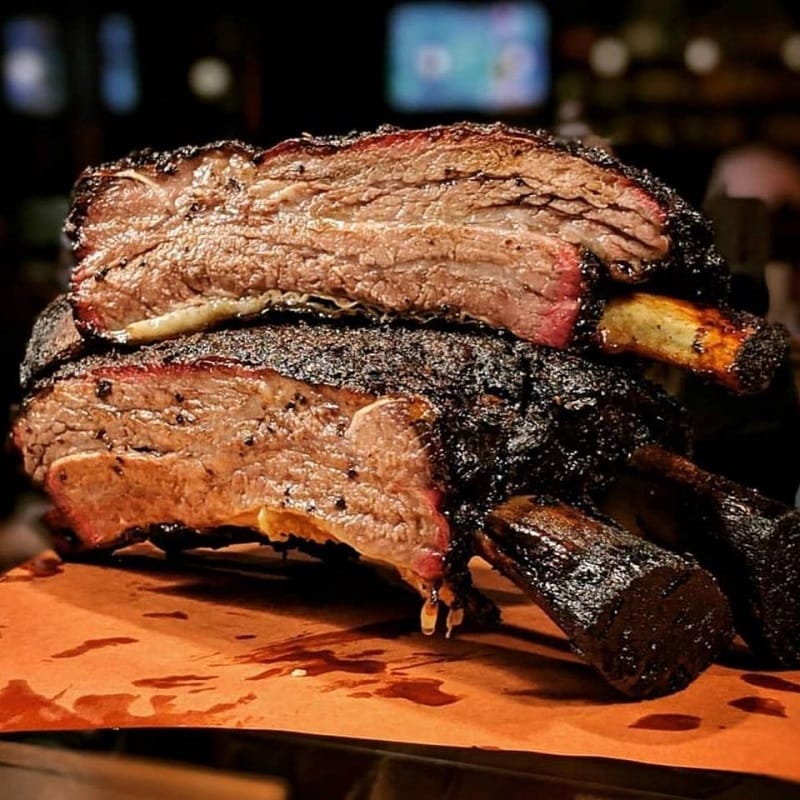
First and foremost, beef and pork ribs come from the same family of animals, the ruminants. Ruminants have a four-chambered stomach, allowing them to digest plant and other plant-based matter. This means that both beef and pork ribs come from animals that are able to utilize the same type of nutrition and energy.
The second similarity between beef and pork ribs is the way in which they are cooked. Both require long, slow cooking times to ensure the meat is tender and flavorful. This is why grilling and smoking are both popular methods. Both beef and pork ribs can be cooked in various ways, including oven-braising, slow-cooking, and barbecuing.
The third similarity between beef and pork ribs is that both can be used as a main course or a side dish. For example, beef ribs can be used in various dishes, including classic BBQ ribs, while pork ribs can be used in more creative dishes, such as baked stuffed pork ribs. Both are delicious and can make for a great dinner.
Finally, beef and pork ribs can be prepared in various ways. You can marinate either rib or dry rub them for an intense flavor. You can also slow cook them in a slow cooker or use a combination of methods to create an amazing dish.
Beef Vs Pork Ribs: The Differences
Beef ribs tend to be much larger in size and contain more fat than pork ribs, making them a bit more filling. They also have a specific, stronger taste compared to the milder flavor of pork ribs. Pork ribs come from a smaller animal, meaning they tend to be leaner and more versatile in flavor. In terms of cooking, beef ribs can take slightly higher heat since they’re larger and fattier.
Pork Ribs vs Beef: Nutrient Content
When it comes to their nutrient content, beef, and pork ribs differ significantly. Beef ribs are leaner and contain fewer calories, but they are a good protein, iron, and zinc source. On the other hand, pork ribs are a bit fattier, but they are still a source of selenium and thiamin. Beef ribs will likely be your better option if you’re trying to make healthier choices.
Size Difference
Beef ribs tend to be larger, with a larger bone-to-meat ratio. On the other hand, pork ribs are usually smaller and have a smaller bone-to-meat ratio. This means that you will likely get more meat from a beef rib than from a pork rib.
The ratio of Meat to Fat
When it comes to the ratio of meat to fat, pork ribs generally tend to have more fat than beef ribs. This is because pork ribs are fattier. If you’re looking for leaner cuts of meat, beef ribs will be your better option.
Beef Ribs vs Pork Ribs: Difference in Cost
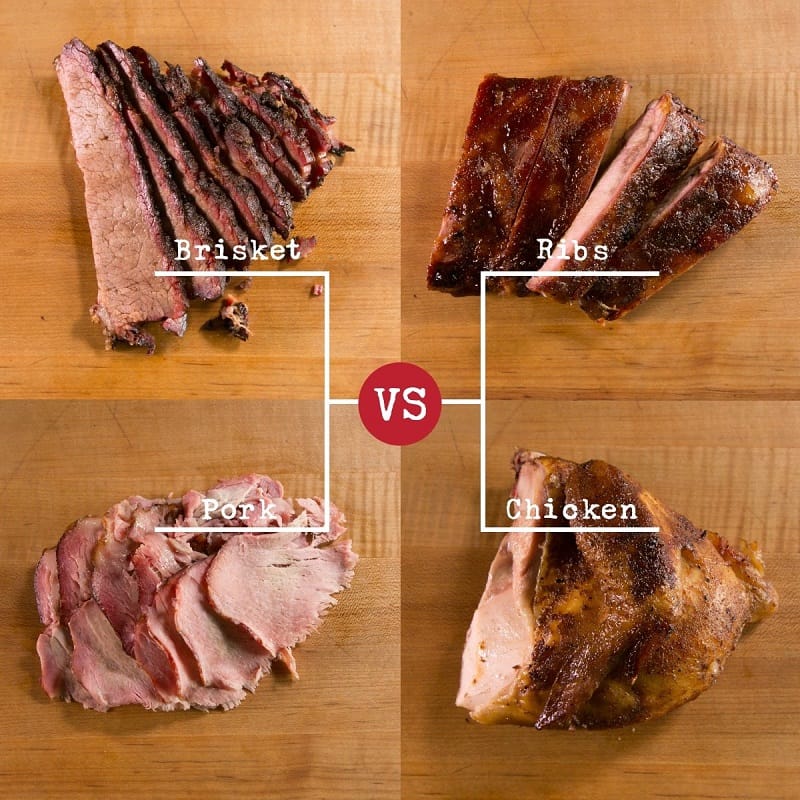
The cost of beef and pork ribs also differs. Beef ribs tend to be more expensive due to the fact that the meat is leaner and there is less fat. Pork ribs tend to be cheaper, but they also have more fat.
Calorie Count And Protein Content Favor Beef Ribs
Beef ribs are lower in calories, with about 147 calories per three-ounce serving. Pork ribs, on the other hand, contain about 190 calories per three-ounce serving. Beef ribs also contain about 25 grams of protein per three-ounce serving, while pork ribs contain about 21 grams.
Versatile In Terms Of Flavor
When it comes to flavor, beef ribs and pork ribs both have unique flavor profiles. Beef ribs are more flavorful and tender, making them great for slow-cooked dishes. On the other hand, pork ribs are milder in flavor but still have a nice smoky kick. Depending on your preferences, you can choose the rib type for your dish that best suits your tastes.
Heats For Cooking
When it comes to cooking temperatures, beef ribs require higher heat than pork ribs. This is because beef has a higher fat content than pork, meaning the fat must be cooked off, and the meat must be cooked longer to create a tender and juicy result. Pork ribs, on the other hand, can be cooked at lower temperatures, which allows the meat to stay juicy and tender.
Cooking Time
Beef ribs will take longer to cook than pork ribs. This is because beef ribs are thicker and require more cooking time. On the other hand, pork ribs are thinner and can be cooked in a shorter amount of time. Depending on the recipe, you may need to adjust the cooking time accordingly.
Cooking Method
The cooking method you choose will also affect the outcome of your dish. Beef ribs can be cooked in the oven, on the grill, in a slow cooker, or over a campfire. Pork ribs, however, are best cooked in the oven, on the grill, or in a smoker. This is because the fat content in pork ribs can cause flare-ups on the grill if not monitored carefully.
Which Meat Has More Meat On The Bone: Beef Or Pork Ribs?
When it comes to the amount of meat on the bone, beef ribs are usually the winner. This is because beef ribs are thicker than pork ribs, meaning more meat is on the bone. However, pork ribs can still be quite juicy and flavorful.
Read more:
Which Meat Is Better Suited For Larger Gatherings: Beef Or Pork Ribs?
When planning a large gathering, choosing the right food is key to ensuring the success of your event. It comes to selecting the meal for a large gathering, many people are torn between choosing beef or pork ribs. Both types of meat have their unique flavor and texture and present different considerations when it comes to budget, time, and effort. So which one is better suited for larger gatherings?
First, let’s talk about beef. Beef is a classic choice for any event, as it’s a hearty and versatile meat. Beef ribs can be cooked quickly and easily and served in many ways. There are also various options for cutting, from chuck roast to ribeye steak. Plus, beef is a relatively inexpensive option, so that it can be a great choice for larger gatherings.
Pork ribs, however, are a bit more labor-intensive and time-consuming to prepare. They require a longer cooking time and must be cooked at a lower temperature to ensure the meat is tender and juicy. Pork ribs are also traditionally served with a sweet and tangy barbecue sauce, which can add to the cost of the meal. However, pork ribs have a unique flavor that can be a great addition to any gathering.
When it comes to choosing the best meat for larger gatherings, it depends on the type of event, budget, and preferences of the guests. Beef is a classic and budget-friendly choice for large gatherings, but pork ribs can be a great addition if you’re looking for something more unique.
No matter which meat you choose, ensuring your guests are satisfied and have plenty of delicious food to enjoy is important. With a bit of planning and preparation, you can make sure your large gathering is a huge success.
How to Cook Pork Ribs
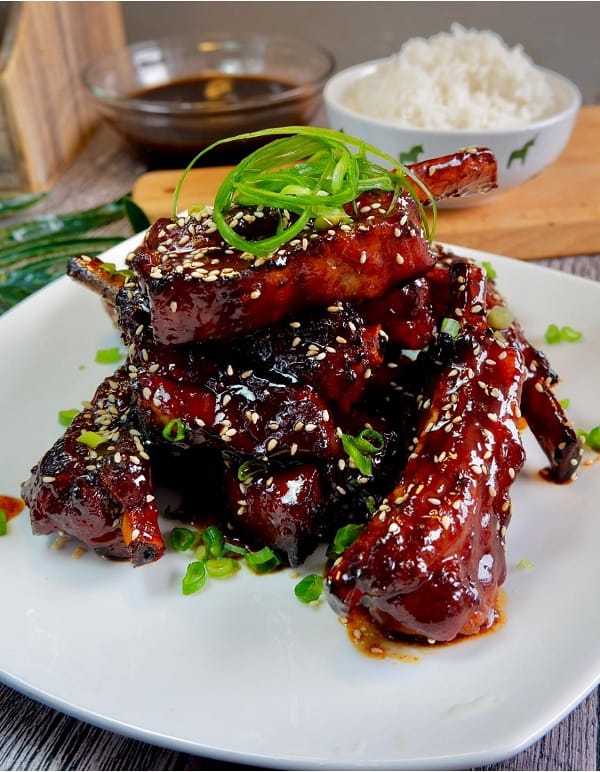
Whether you’re a novice cook or a seasoned pro, some tips and tricks can help you master the art of cooking pork ribs.
- Choose the Right Cut: The cut of pork ribs you choose is essential for a delicious finished product. The two most common cuts of pork ribs are baby back ribs and spare ribs. Baby back ribs are the most popular because they are tender and lean. Spare ribs, on the other hand, are bigger and fattier, so they require longer cooking times to become tender.
- Preparing the Ribs: The first step in preparing pork ribs is to remove the membrane from the underside of the ribs. This membrane is tough and chewy and can prevent the flavor from getting into the meat. To remove the membrane, use a paper towel and slide it up from the bottom, then pull it off.
- Seasoning the Ribs: Once you’ve prepped the ribs, it’s time to season them. You can create a dry rub by combining your favorite spices or use a wet rub with oil, vinegar, and spices. Let the ribs sit for at least 30 minutes to allow the flavors to penetrate the meat.
- Cooking the Ribs: Now it’s time to cook the ribs! Two popular ways to cook pork ribs are slow-cooking in the oven or grilling on the barbecue. If you’re slow-cooking in the oven, preheat the oven to 225 degrees Fahrenheit and place the ribs on a roasting pan. Cover the ribs with foil and bake for 3 hours. If you’re grilling the ribs, preheat the grill to medium-high heat and place the ribs on the grill. Grill for 20-30 minutes, flipping the ribs every 10 minutes or until the ribs reach an internal temperature of 145 degrees Fahrenheit.
- Finishing the Ribs: Once the ribs have cooked, finish them with a glaze or sauce. Combine honey, brown sugar, and your favorite spices for a deliciously sweet glaze. Brush the glaze over the ribs and cook for 5-10 minutes. Combine ketchup, Worcestershire sauce, and garlic powder for a savory sauce. Brush the sauce over the ribs and cook an additional 5-10 minutes.
How to Cook Beef Ribs
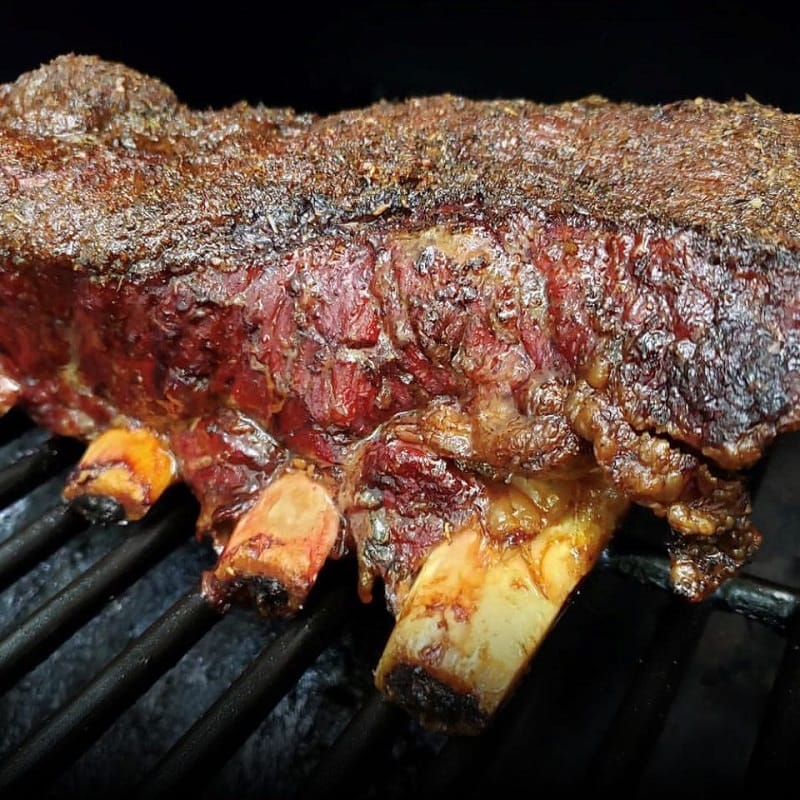
Here’s how to cook beef ribs perfectly every time:
- Prepare the Ribs: Before cooking beef ribs, you must prepare them first. Trim off any excess fat or sinew from the ribs using a sharp knife. Rinse the ribs under cold water and pat them dry with a paper towel.
- Season the Ribs: When it comes to seasoning beef ribs, the possibilities are endless. You can use a variety of herbs and spices to create the flavor profile you’re looking for. Some popular options include garlic powder, cumin, chili powder, smoked paprika, oregano, and thyme.
- Grill the Ribs: You’ll want to grill your beef ribs on medium-high heat for the best results. Place the ribs on the grill and cook them for 10-15 minutes, flipping them every few minutes to ensure they cook evenly.
- Finish in the Oven: Transfer the ribs to a preheated oven once you’ve achieved a nice sear on them. Bake the ribs in a 350°F oven for about 20 minutes or until the internal temperature reaches 145-160°F.
- Let the Ribs Rest: Once your beef ribs have finished cooking, it’s essential to let them rest before serving. This will allow the juices to redistribute and create a more flavorful and tender rib. Cover the ribs with foil and let them rest for about 10 minutes before serving.
FAQs About Beef Vs Pork Ribs
How Do You Season Both Beef And Pork Ribs To Perfection?
To do so, one can apply a dry rub to both sides of the rib racks, ensuring the coating is as thick as possible. A combination of sea salt, black pepper, and cayenne pepper can be used for a basic homemade rub. Removing excess fat from the ribs and bringing the meat to room temperature before cooking is important. The bone side should be seasoned first, followed by the meat side.
Whether one prefers a dry rub or marinade, liberally coat both sides of the ribs and pat it in for optimal flavor. Finally, rinse the ribs and dry them with paper towels before seasoning them for the juiciest results.
What Are Some Tips For Getting The Perfect BBQ Flavor From Either Beef Or Pork Ribs?
With these tips, your ribs will turn out juicy, tender, and flavorful – perfect for any backyard BBQ.
- Firstly, use the same rub for everything, as grilling expert Rick Browne suggests. This can help build layers of flavor, and a simple rub can work wonders. Don’t forget to season the meat with salt properly, but take into account that ribs are about 50% bone, so use about 1/2 teaspoon of kosher salt per pound of meat.
- Secondly, clean your grill or smoker since a greasy grate can ruin even the best batch of ribs.
- Thirdly, try incorporating apple cider vinegar infused with tarragon or orange wood for a unique flavor.
- Lastly, follow Foodal’s five simple steps, including marinating the ribs in a dry rub and sauce and wrapping the ribs in heavy-duty aluminum foil to add flavor.
What Kind Of Wood Is Best To Use When Smoking Either Beef Or Pork Ribs?
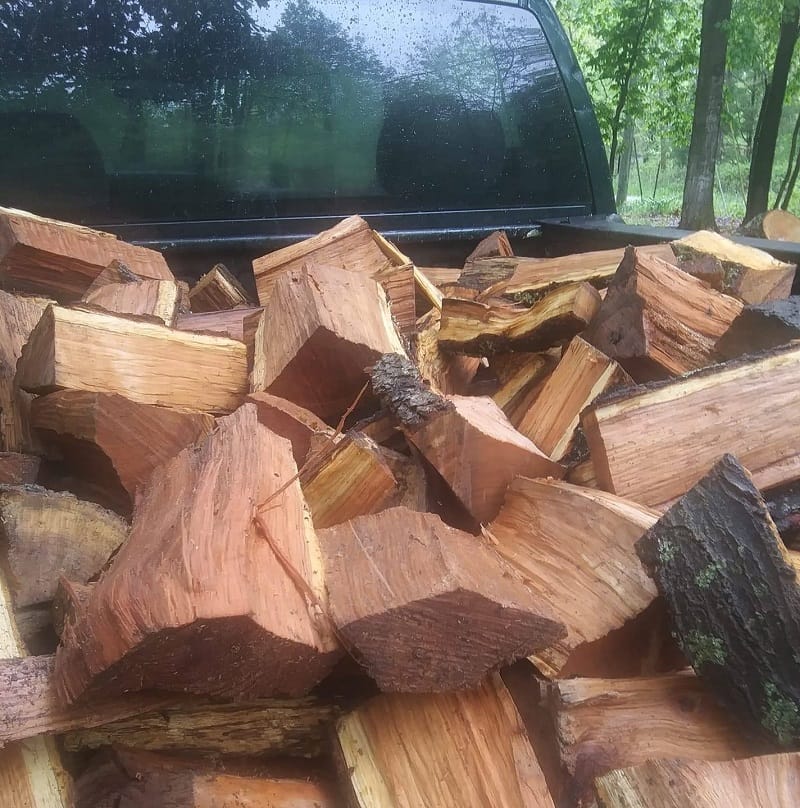
When it comes to smoking ribs, choosing the right type of wood can make all the difference in the flavor and tenderness of your meat.
- For pork ribs, cherry, pecan, and hickory are some of the best options. Hickory is a top choice, as it is rich in flavor and can give your ribs a hint of bacon taste.
- For beef ribs, oak, mesquite, and hickory are great choices, as they add an intense smokey flavor that complements the beef.
Of course, the best choice will ultimately depend on personal preference and the desired flavor profile. Whatever type of wood is chosen, it’s important to remember to use hardwoods, which can help to caramelize the exterior of pork ribs and enhance the overall flavor of the meat. So, whether you’re smoking pork or beef ribs, choose a quality hardwood like hickory or oak, and enjoy the delicious results.
How Do You Know When Your Beef Or Pork Ribs Are Done Cooking Properly?
One way to test for doneness is by using the toothpick method. When inserted into the meaty parts of the rack, the toothpick should slide in smoothly without resistance. Additionally, the recommended internal temperature for cooked pork ribs is 145°F according to the USDA, but this may result in tough and rubbery meat. Most ribs hit their sweet spot at around 198°F, with some taking up to 203°F.
At around 195°F, the meat tissue turns gelatinous, resulting in a tender and delicious bite. The meat should appear mahogany, while the center should be white or slightly tanned with no visible pink juices. By keeping these factors in mind, anyone can be a rib-cooking pro.
Conclusion
Ultimately, the choice between beef and pork ribs comes down to personal preference. Both types of ribs offer their unique flavors, textures, and nutritional values. Consider your dietary preferences and budget when deciding between beef and pork ribs. No matter which type of ribs you choose, you can be sure to enjoy a delicious and nutritious meal!

Hey readers! Chip Holland here, and I’m a Manager of this website. My passion for writing about it only matches my passion for BBQ. Follow my blog for mouth-watering recipes, tips, and tricks for the perfect smoke, grill, and BBQ. I’m sure you won’t be disappointed!
